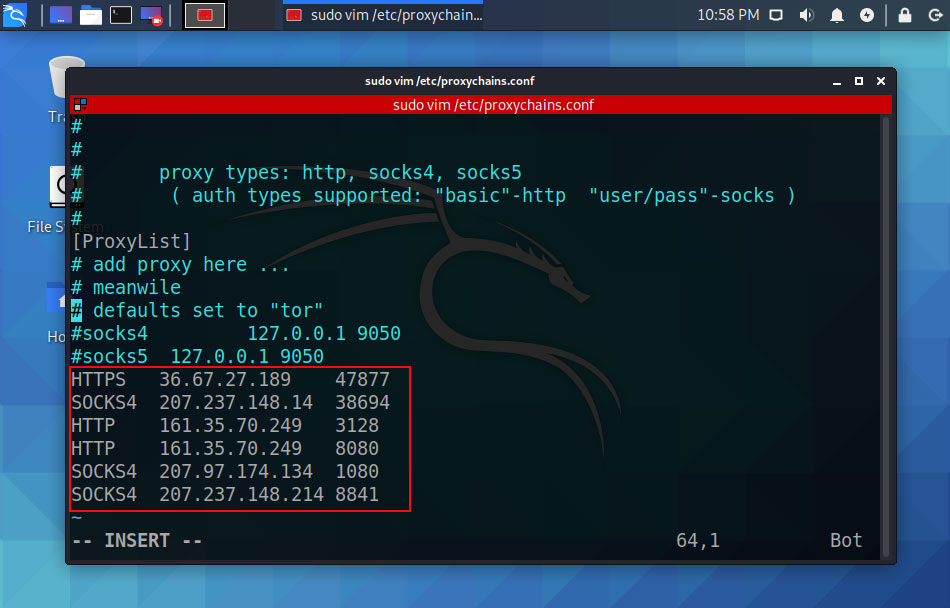

:~# proxychains nmap -sS -T4 -v As you can see in the screenshot above, I have successfully scanned through my chosen proxy and returned the results back to me. In this case, I am simply going to do an nmap scan to anonymously by sending the scan through a proxy. Now that we have put a proxy between us and any traffic we send, let’s test it out. If you are not using Tor, you will need to comment out this line.Īs much as I like Tor, it is very slow and we now know that the NSA has broken Tor, so I am much less likely to depend upon it for anonymity. If you are using Tor, leaves this as it is. It directs proxychains to send the traffic first through our host at 127.0.0.1 on port 9050 (the default Tor configuration). Notice the last line in the screenshot above. It’s important to note that proxychains defaults to use Tor.

To get proxychains to use intermediary proxies, we simply need to add the IP addresses of the proxies we want to use here. Visit the link, and scroll down the webpage until you see the proxy list detail.

Kali linux how to use tor for free#
You can get IP proxy lists for free in HideMyAss. If we scroll down this file a bit, we will see a section that I have highlighted labeled “add proxy list here…”. When we do so, we will see a file like that displayed below. We can open it in leafpad or any other text editor (vi, emacs, gedit, kwrite, etc.), by typing: In the case of proxychains, this file is /etc/nf.

Like nearly every application in Linux/Unix, configuration is managed by a simple text file called the config file. So, if I wanted to use proxychains to scan a site with nmap anonymously, I could type: The syntax for the proxycahins command is simple and straightforward. This is just as we would want since we use proxychains with other commands, which may NOT likely be in the PATH variable. Since /usr/bin is in our PATH variable, we can use it from any directory. Type:Īs we can see in the screenshot above, above the highlighted output, proxychains is in the /usr/bin directory. so type in: proxychains nmap -sT -P0 -p 80 -iR 192.168.1.0/24 Step 1: Look at Proxychains files For example we want to scan any webservers in a range of our local network by using Proxychains,or scan specific target by its URL hostname or IP. By adding command “proxychains” for every jobs, thats mean we enable Proxychains service. Instead of scanning or do multiple requests to any target directly using our IP, we can let Proxychains to cover up our identities.


 0 kommentar(er)
0 kommentar(er)
